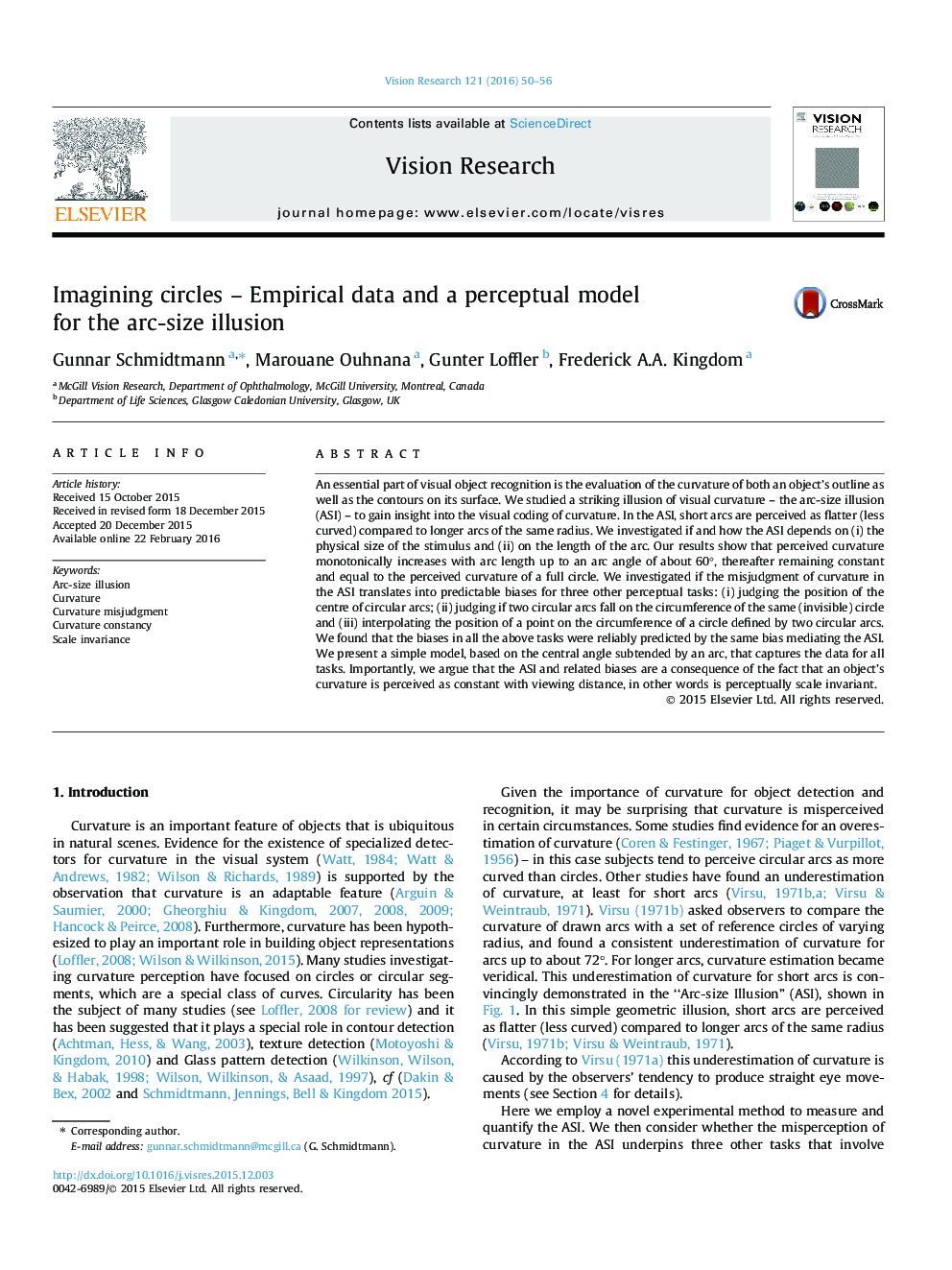| Article ID | Journal | Published Year | Pages | File Type |
|---|---|---|---|---|
| 6203028 | Vision Research | 2016 | 7 Pages |
An essential part of visual object recognition is the evaluation of the curvature of both an object's outline as well as the contours on its surface. We studied a striking illusion of visual curvature - the arc-size illusion (ASI) - to gain insight into the visual coding of curvature. In the ASI, short arcs are perceived as flatter (less curved) compared to longer arcs of the same radius. We investigated if and how the ASI depends on (i) the physical size of the stimulus and (ii) on the length of the arc. Our results show that perceived curvature monotonically increases with arc length up to an arc angle of about 60°, thereafter remaining constant and equal to the perceived curvature of a full circle. We investigated if the misjudgment of curvature in the ASI translates into predictable biases for three other perceptual tasks: (i) judging the position of the centre of circular arcs; (ii) judging if two circular arcs fall on the circumference of the same (invisible) circle and (iii) interpolating the position of a point on the circumference of a circle defined by two circular arcs. We found that the biases in all the above tasks were reliably predicted by the same bias mediating the ASI. We present a simple model, based on the central angle subtended by an arc, that captures the data for all tasks. Importantly, we argue that the ASI and related biases are a consequence of the fact that an object's curvature is perceived as constant with viewing distance, in other words is perceptually scale invariant.
